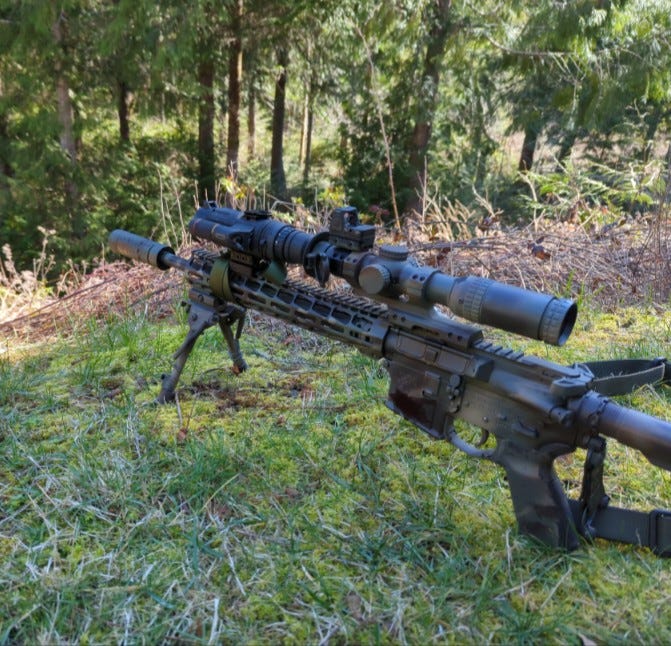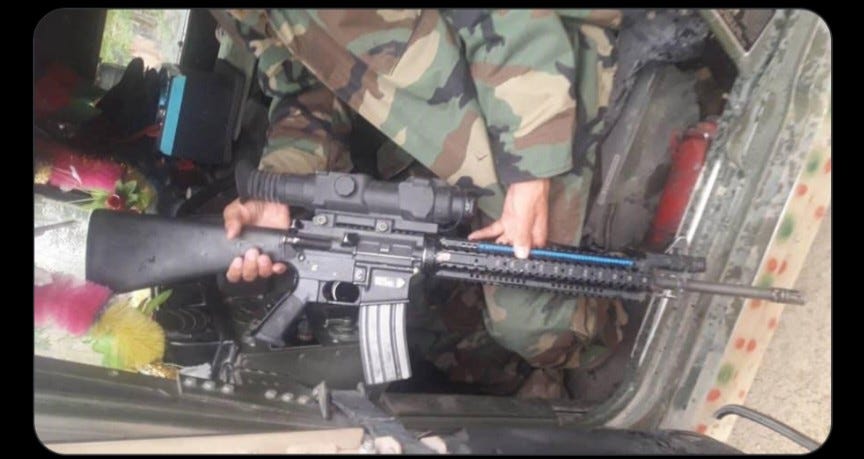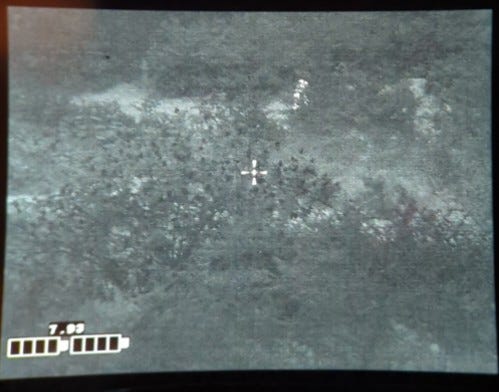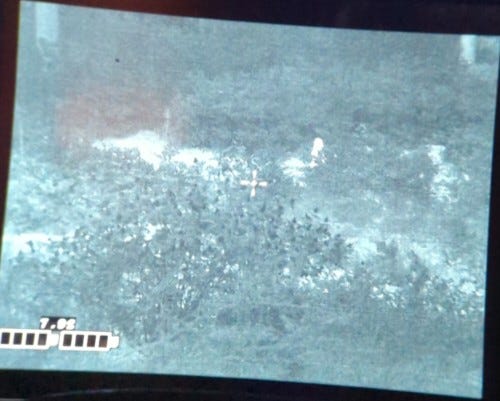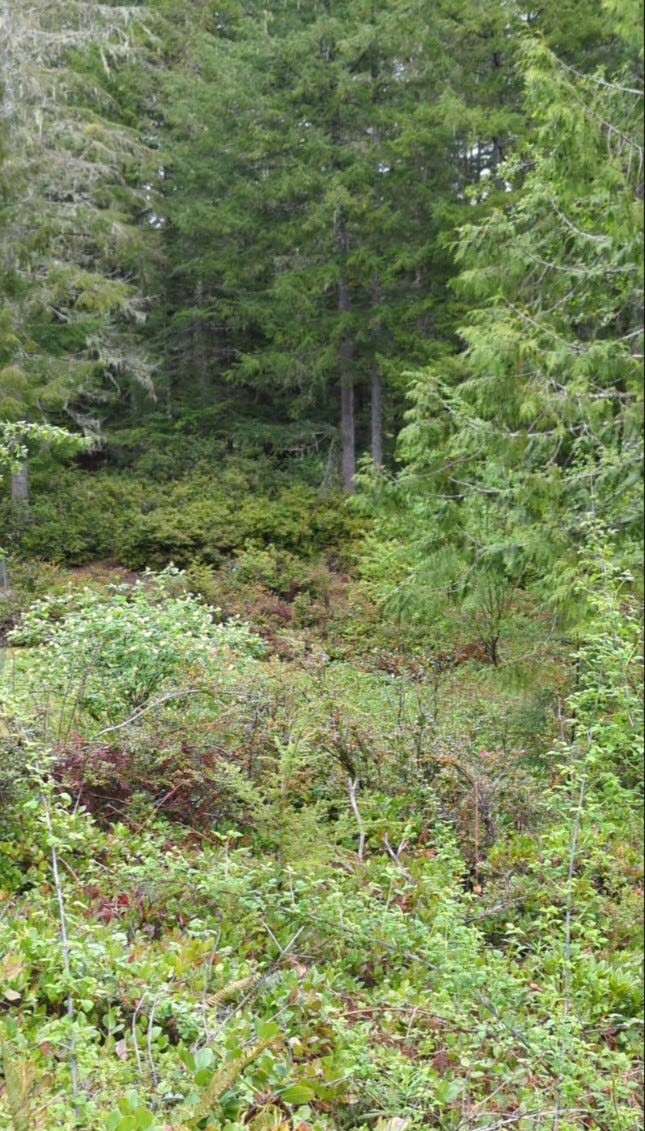As NC Scout said: “We place a premium, probably too much in my opinion, on day optics alone. […] Having one rifle, a decent optic with some magnification, and a clip on thermal is a very, very nasty combination”
We all know that guy. In his safe there are 12 mediocre rifles, a few with off brand optics, even fewer are sighted in at anything more than pistol distances. The reality is that this guy has made a substantial investment in firearms yet has only a minimal capability to show for it. Having one capable rifle (or two, because two is one and one is none) fitted with a decent scope and investing in enablers such as NV and thermal increases your capability infinitely more than AR #7 does sitting in your safe.
The intention here is not to minimize the reality that these things are expensive by almost anyone’s standards, but to refocus the idea of prepping from stacking things deep to stacking capabilities deep. The capability to locate, ID, and engage a target that has camouflaged itself from you in low visibility conditions is, as noted above, a “very, very nasty combination”. And in the last 5 years thermal optics have (unlike PVS 14’s) come down in price due to increased competition and new entrants to the market. The opportunity to spend truly insane amounts of money is surely still there, but Ready Made Resources or the Brushbeater store have far more options for “the working man's” budget than ever before.
Once you’ve made the decision to get thermal, there are two main ways of implementing it. You'll want to make sure the model you choose works well with the way you plan to use it.
Augmenting vision for scanning and detection (day or night).
Hand held.
Helmet mounted.
Weapon mounted.
“Clip on” collimated with your daylight optic.
As the main optic on the rifle.
Your options for each will vary by brand and model, so make sure you do your research before spending your money!
a) Handheld. Pretty much anything you buy will do this, and I can’t stress how useful this can be! The ability to scan an area before moving through it could be a real lifesaver. There are ways to defeat thermal, and there will be more on that below, but a couple years back during a force on force training exercise (with blanks) I stopped to scan a stretch of road that looked like a great spot to lay an ambush, and sure enough found 3 “glowing pumpkins” that were in fact the faces of 3 of the 6 men laid out for a V shaped ambush. They were well camouflaged, and our team would have stood little chance if we had walked into it. Of note: they got us later that day when we again spotted two prone at the top of a hillside with the thermal, which did us little good as we were already on their “X”. After initiation by the rifles on the hillside 4 popped up from behind brush which had masked their position from detection, with large tree trunks for cover and brass raining down beside them. The two on the hill side were the short leg of the L, and equipped with rifles they had proven themselves out to 500 yards with on steel the previous day. We charged the near side of the ambush, but we never would have made it there with live rounds flying. Thermal is a great tool, but will never make up for a bad decision!
b) Helmet mounted. Make sure you get a model that isn’t too long / heavy if this is what you wish to do. I have seen this employed with a PVS 14 on one side and thermal on the other. I have not done this myself, my personnel opinion is that it looks cool but might take considerable time to get used to both moving and shooting under this setup. I try to make things easier for my brain rather than harder.
a) Weapon mounted. “Clip on”.
This nasty setup has put coyotes to sleep for a dirt nap out to almost 250 yards. I was initially concerned with repeatability however have found it can hold “minute of hand warmer” at 50 yards when dismounted and re mounted as long as it is put back on the same place every time, which I have marked for quick reference. The nice (nasty) thing about a collimated thermal optic is that your shooting position on the rifle does not change, and when you dismount the thermal your daylight optic is unchanged. I personally feel that the maximum effective range of this set up is about 200, due to the the variability from mounting it this way, the 50/200 zero I use on that rifle, as well as the ability to ID a target past that distance. I have spotted elk out to almost 1000 yards with this thermal, but taking a shot at longer distances involves more than detecting its presence.
b) As the main optic.
While certainly effective, and offering the ability to fine tune your zero a little better than the collimated optic, thermal optics are notorious for tearing through batteries. If you go this route make sure you have a plan for how you would use your rifle if the batteries are dead such as back up irons or something like an RMR.
Defeating thermal.
As noted above thermal has its limitations. A camouflaged emergency blanket does a surprisingly good job of defeating thermal, as detailed here by Wyoming Survival as well as others. These are great multi use items already, so there's yet another reason to use them. But thermal also requires a direct line of sight between the sensor and that which you wish to sense. In my neck of the woods taking a knee will render you undetectable in some areas due to the density of the forest and brush. I've seen deer disappear off the face of the earth with just a few steps into the thicket. Intermediate barriers can also be employed to mask your position. Its harder than you might think to ID that sliver of heat you can see as being the cheek of a man behind a rifle with branches or brush in the foreground instead of some small critter in the distance or a rock still warm from the day.
Enablers such as thermal are game changers, but I recommend understanding the strengths and weaknesses as well as having a plan to implement it before you buy.
Getting good pictures and video with a cell phone is tough, if you zoom in to fill the screen the image gets blurry due to the small distance of the screen to the lens.
Sunny day:
Can you spot the 10 year old hiding from me at 50 yards?
Cold, cloudy day:
Thermal vs visual. Child hiding behind bushes, no camo.
Until next time.




